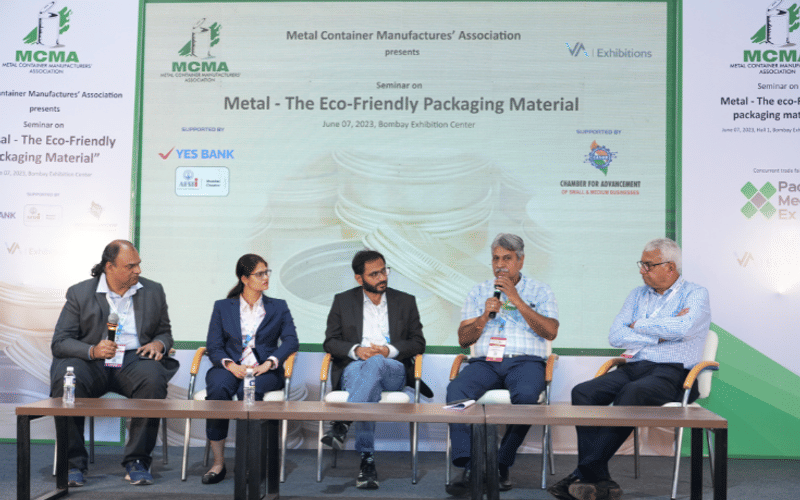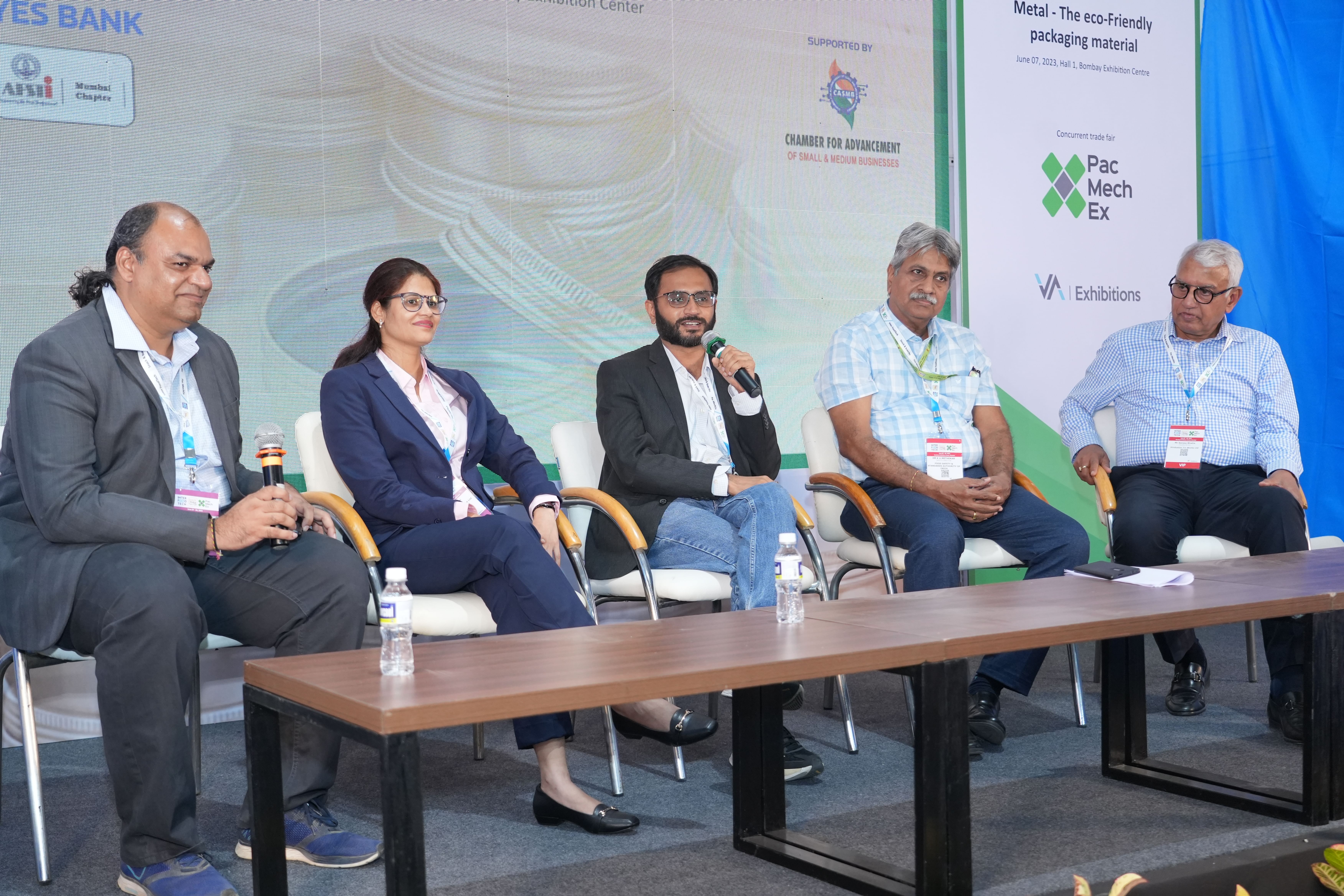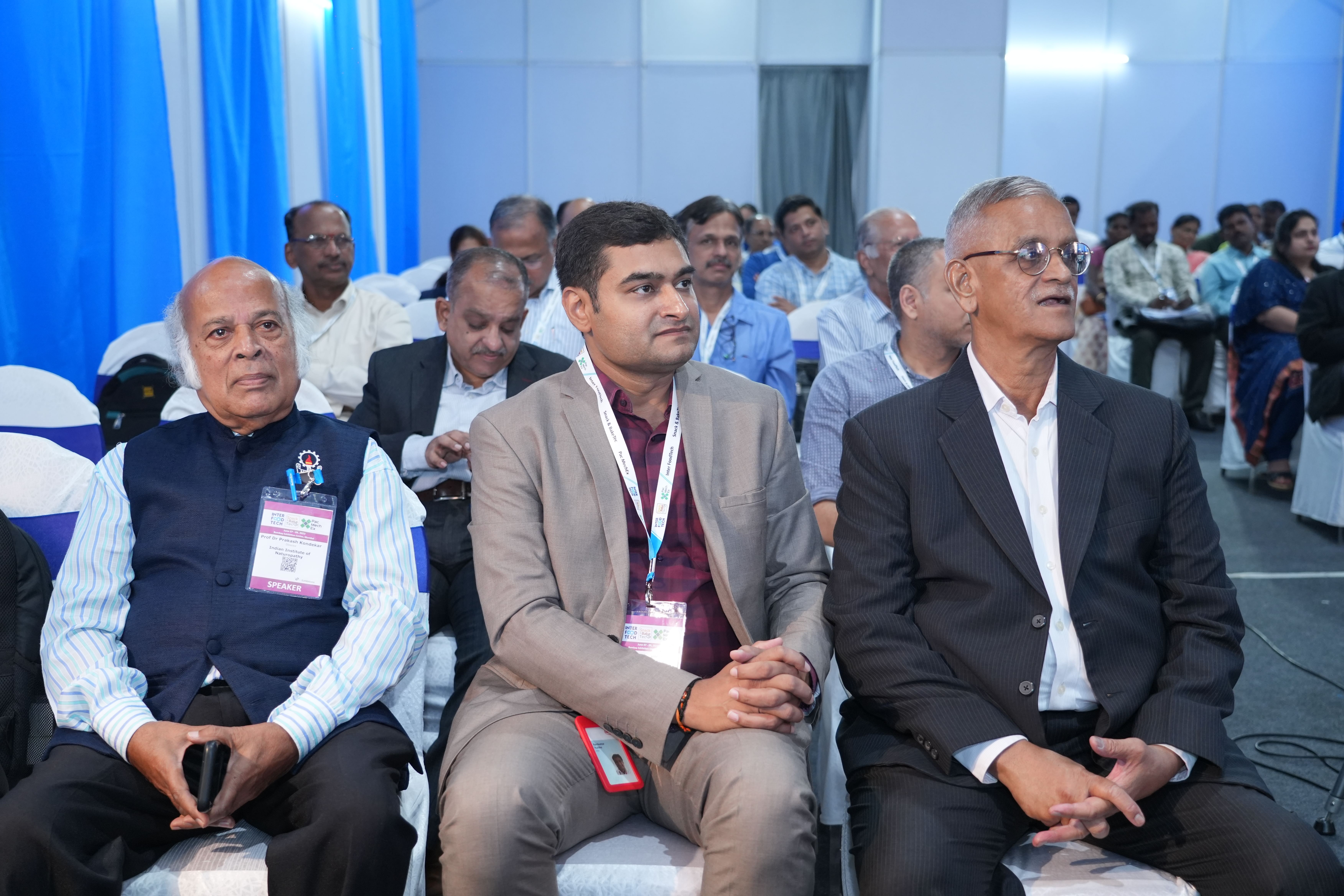Metal, an ideal choice for sustainable packaging, say MCMA panellists
At the seminar hosted by Metal Container Manufacturers Association (MCMA) - Metal: The eco-friendly packaging during the PacMech exhibition at the Bombay Exhibition Centre. It’s clearly been a very volatile time. There’s been pressure across the can-making eco-system. Abhay Avadhani reports on what is happening in this rapidly changing environment and the overall performance of the industry.
28 Jun 2023 | By Abhay Avadhani
Moderator: Ritesh Mathur, founder, F2F Food and Beverage Consultants, and secretary for Association of Food Scientists and Technologists (AFST), Mumbai.
Mital Doshi, deputy manager - quality, Idemitsu Lube India; Avartan Bokil, co-founder, Foodstrong; KU Methekar, deputy director, FSSAI; Sanjay Bhatia, president, Metal Container Manufacturers Association (MCMA), and managing director of Hindustan Tin Works
Ritesh Mathur (RM) (opening remarks): We have an esteemed panel with members from the food industry, one official from FSSAI, plus members from consumer goods, to oil, and metals.
First question is for Sanjay Bhatia. What has transpired in the industry since 40-45 years?
Sanjay Bhatia (SB): I have spent 45 years in Hindustan Tin Works. We are one of the leading companies and we work very closely with our customers, suppliers, vendors and the whole supply chain. I think communication is the key. Effective communication, and engagement with vendors, customers, shareholders and employees is what needs to be done in the industry. This ensures a smooth hassle-free workflow.
RM: Avartan Bokil, you are from the food space. During the process of making protein supplements and various other nutrition products, everybody looks for a plastic container. What triggered you to think of making a composite can packaging?
Avartan Bokil (AB): When we entered the market, most of the protein brands had black or white plastic containers. Our entire objective was that we want to make goods easy. So we observed how consumers are consuming their protein powders and the challenges associated with it. As you are aware, one of the biggest kinds of waste apart from plastic, is food waste.
RM: Does this happen with protein supplements too?
AB: The consumers would use one protein supplement jar for many days which would result in decaying of the food product. Hence, our idea was to move from those jars to a single serve sachets; providing a fresh product every time a consumer opens the sachet. Once you've taken care of the integrity of the packaging from a storage perspective, then you can create a completely recyclable outer pack. That is why we came up with cans as the secondary pack over paper.
RM: Mital Doshi, a question for you. What things do you keep in mind while designing a new packaging material?
Mital Doshi (MD): As a player in the lubricant industry for developing any new product, we would prefer to go with HDPE containers. That is because, firstly, our filling lines are accustomed to that, and secondly, it is the best material choice if it is going into a local market. At the same time, it is cost effective.
RM: KU Methekar, any regulations from the FSSAI about can packaging?
KU Methekar (KUM): There are three stakeholders in this chain. One is the food business operator, the consumer and the third one is the regulator. In the food business operator’s part, a food packaging manufacturer is also intrinsically involved. Initially we had regulations for labelling and packaging only. Now, the FSSAI has introduced specific packaging regulations, which includes schedules for different packaging materials.
RM: Such as?
KUM: For example, Schedule-II consists of standards and regulations for metal and alloys used in the food packaging industry. The food grade packaging material should not pose any threats and it should be tested from the NABL accredited and FSSAI certified laboratories.
RM: Which parameters are crucial?
KUM: Certain parameters such as the porosity and releasing of non-volatile substances, are important. And the regulation says that the reuse of tin is prohibited. So this needs to be instilled in all the food business operators and all the elements involved in the supply chain.
RM: Sanjay Bhatia, what is happening in terms of innovation, research and development in the metal tin can industry? The polymer industry claims to have a lot of challenges, but to be fair to them, they are developing new products with laminates and so on. No one knows what is happening behind-the-scenes in can-making?
SB: As a can-maker, not much research is being done. And this is unfortunate, but attempts are being carried out to look at how to reduce the cost of the container. That is possible through the use of thinner gauges or change in the diameter. At the tinplate production level, which is the base of all, research has been happening on the laminated tinplate. The prospect shows that the lacquering process is eliminated and the laminated plate is used as it is. In terms of cans, the reduction in thickness is such that the weight of the empty can has been reduced by 30-35% in the last 15 years.
RM: What about the manufacturing speed of cans?
SB: Beverage cans are being produced at a speed of almost around 2,500 cans a minute.
RM: Any research on the new molecules or materials in the metal industry?
SB: We look at newer products and how we can market them. The cans for Reebok watches is our project. Similarly one can look at various product prototypes and product launches in perfumery and so on. Also, we have made cans for storage of kitchen items such as sugar. These specialised cans have windows through which the products can be seen. It is known as a hybrid can.
RM: Avartan Bokil, when you design a packaging product, do you keep the GenZ in mind? What type of package can attract the next generation?
AB: I feel you can learn a lot from your consumers. So consumers are making choices on the back of what they perceive to be more environmentally-friendly products. They have strong views in terms of “what packaging works” from an environmental standpoint as well. For example, the composite cans that we have, there are many consumers who utilise those composite cans in making other kinds of storage containers. We are trying to understand what the experience will be when the product will be consumed, and what is the primary aim of our packaging. But also, once it's consumed, what happens to the packaging, we monitor that too.
RM: Why cans?
AB: One of the major reasons why we prefer metal cans is because they are reusable.
RM: Doshi, your views on this?
MD: We pay attention to the views of the millennials. And in this regard, there is a lot of research and development happening on the technology front. In terms of packaging, we look forward to how to reduce the tonnage of the material that we are producing. How much can we put it into the regrind and back into the manufacturing. Also, we seek to optimise the pack sizes.
RM: Does green play a crucial role in all this?
MD: On the green quotient, we planted about 1,200 trees within our factory premises, which is built up in an area of about 72,000-sqm. We also plan to create sustainable technologies and bring in good innovations into the packaging trends. We feel these things will entice the new generation.
RM: There are delegates from the food and packaging industry in the audience who ask, what needs to be taken into consideration from FSSAI’s perspective? From designing their product to designing the packaging?
KUM: There are two things to be seen in terms of food regulations. Number one being the shelf life of the product. Many times it is found that suitable containers are not used for the packaging material. Important parameters such as shelf life of the product, type and form of the product need to be considered. We have given certain recommendations in our FSSAI regulations, and FSSAI has recommended the best suitable packaging material for certain food products. Nobody seems to be following this in the industry.
RM: That’s grim news …
KUM: We have categorised the regulations into ten types of products. But things are not adhered to.
RM: In what way?
KUM: In Mumbai, there is a typical adulteration of milk which happens in the slum areas. To identify such malpractices, Gokul has taken a step to use a different kind of PE bags. If the pouch is tampered, the colour changes to blue. The problem arises due to improper packaging material being used. Hence, I feel, packaging is as important as the product being packed.
RM: One last question to Sanjay Bhatia. We hear about AI and its advantages all over the world a lot nowadays. How does metal and can industry benefit from this?
SB: The industry still has to catch up on digitisation. I have been looking at places where I can introduce AI for manufacturing on our shop floor, but we are still not able to get hold of it.
RM: What are you seeking?
SB: A company which can make cost-effective robotic solutions which can be deployed on our shop floor so that we can reduce human intervention. Since we make food cans, we require no human interaction and to make them under the most hygienic conditions. If we can bring this kind of automation in the manufacturing process, that would prevent contamination, and help the consumer.




